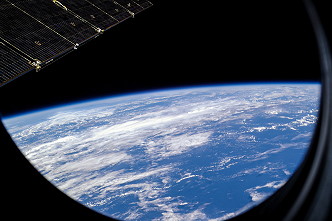Launch from Jiuquan Satellite Launching Center
and landing near the settlement of Hongger, 60 km north of the city Wulanha,
capital of Siziwang Banner / 171 km north of Hohhot in the Amugulang
steppes.
Shenzhou-6 marked the
second Chinese manned
spaceflight. The crew were able to change out of their new lighter space
suits, conduct scientific experiments, and enter the orbital module for the
first time, giving them access to toilet facilities. The exact activities of
the crew were kept secret but were thought by some to include military
reconnaissance, however this is likely untrue given that similar experiments in
the US and USSR determined that humans are not suited for military
reconnaissance
The launch phase was reported to be normal with the
escape rocket separating 120 seconds after launch when the rocket was
travelling 1,300 m/s (4300 ft/s). Sixteen seconds later the four booster
rockets separated at an altitude of 52 km (32 mi). The payload fairing and
first stage detached 200 seconds after launch. The second stage burned for a
further 383 seconds and the spacecraft separated from the rocket 200 km (120
mi) above the Yellow Sea. The spacecraft then used its own propulsion system to
place it into a 211 km by 345 km (131 by 214 statute miles) orbit, with an
inclination of 42.4 degrees, about 21 minutes after launch.
The crew
performed several scientific experiments (research of bone cells, digitally
photographs from Earth's surface, studying heart problems and testing the
modifications of the space ship).
The activities of the crew were not
fully revealed by the Chinese. Only vague references to experiments were made,
though some were made public. One experiment involved the crew testing the
reaction of the spacecraft to movement within the orbital and reentry modules.
They moved between the modules, opening and closing the hatches and operating
equipment with "more strength" than normally required.
There were two
planned landing sites for the mission. The primary site was the banner of
Siziwang in Inner Mongolia. The secondary site was at the Jiuquan launch site.
In addition, there were recovery forces at Yinchuan, Yulin and Handan. It is
also possible for the
Shenzhou spacecraft to splashdown in the ocean should
the need arise, with further recovery crews in the Yellow Sea, the East China
Sea and the Pacific Ocean.
Some Chinese diplomats are trained and
equipped for any emergency landing at sites that are not on Chinese territory.
Zhang Shuting, chief designer of the emergency and rescue system, has said that
emergency landing sites have been identified in Australia, Southwest Asia,
North Africa, Western Europe, the United States and South America. The
diplomatic mission nearest to the landing site will be given the task to head
any rescue mission if necessary. The Chinese government had advised Australia
that emergency landing sites have been identified in New South Wales,
Queensland, the Northern Territory and Western Australia. Emergency Management
Australia, the Australian government agency that co-ordinates the response to
major contingencies, has said they are ready to deal with any emergencies that
arise during spaceflights. However, the return module is designed to allow
access from the outside only to those with a special key. A copy of this key
has not been made available to Australian officials, but it was reported that
an unnamed Chinese military attaché at the Chinese embassy in Canberra
had one.
![]()


![]()










